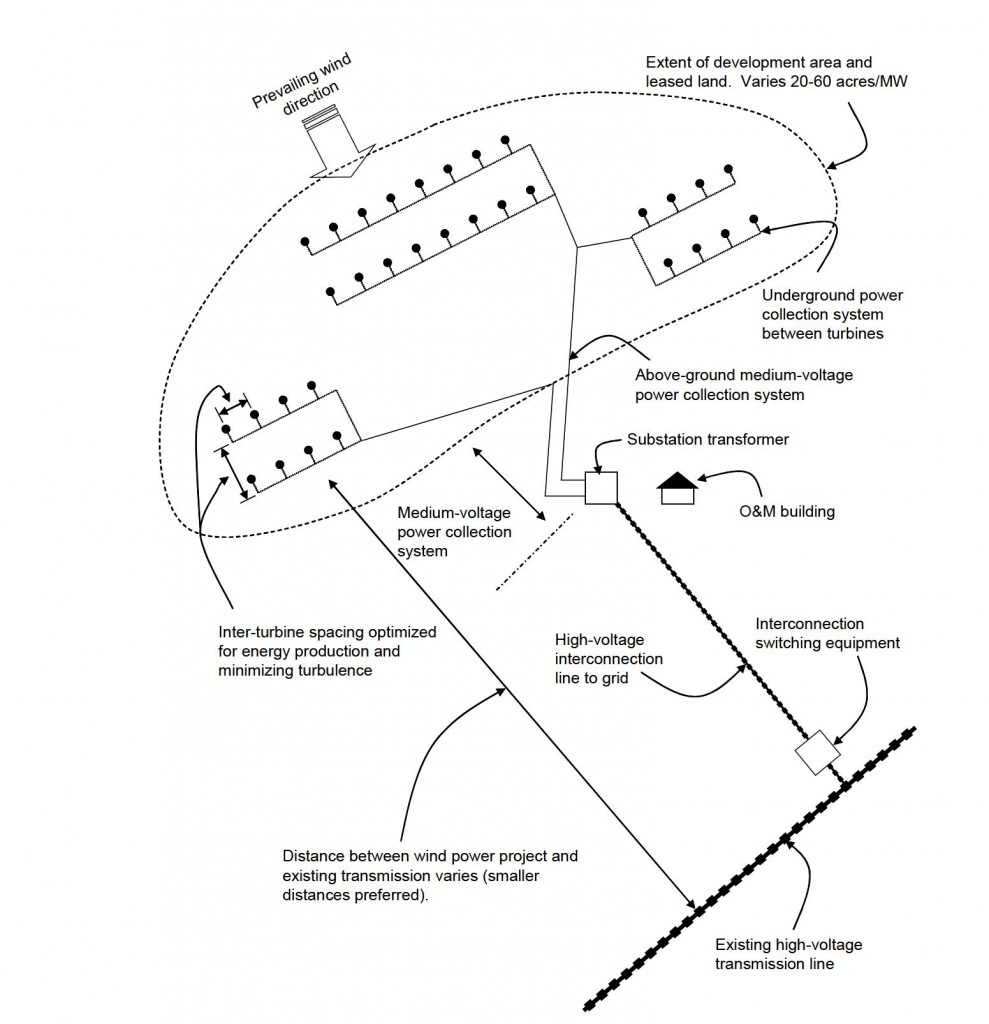The components of a typical, utility size wind farm are:
- One or more rows of turbine perpendiculars to the prevailing wind direction, with a distance between them of 2 or more diameters. For instance, if the diameter of the rotor is 100 meters, the distance would be from 200 to 300 meters. This distance is necessary to avoid induced turbolences to the rotor, than can affect the life of the generator. The number of turbine installed depend of the chosen model: a wind analysis is made, to define the WTG with the best fit for the location.
- An underground power collection system, normally around 20kV-30kV. Sometimes an above ground medium voltage power collection system is used, although it happens very rarely due to the visual impact. Here there is a trade off between greater spacing between the WTGs (=more production) and greater cables length (=more energy losses and cable cost).
- Civil works (roads, crane pads, foundations)
- A substation transformer
- An operation and management (O&M) building, to store spare parts and perform maintenance. Can be integrated in the substation.
- A SCADA system, to collect and transmit data from the wind farm to the stakeholders.
- A high voltage interconnection line to the grid. The distance from the substation to the grid can vary greatly, and if the wind resource is sufficiently high longer distance can be feasible. The interconnection point to the utility line can be co-located in the substation: in this case (frequent when the wind farm connects to an existing substation) there is no need for an overhead line.

Leave a Reply